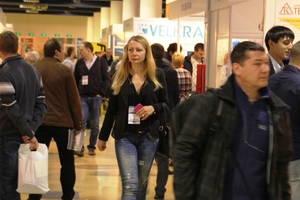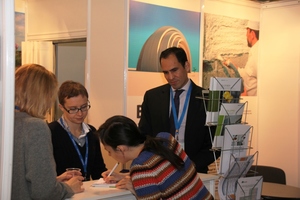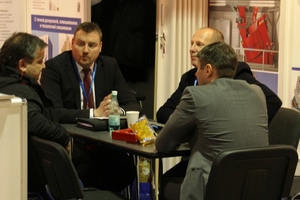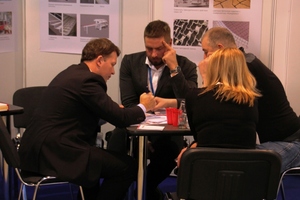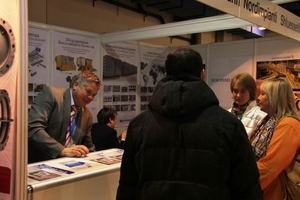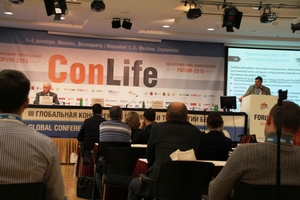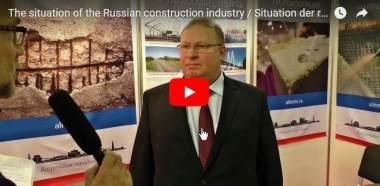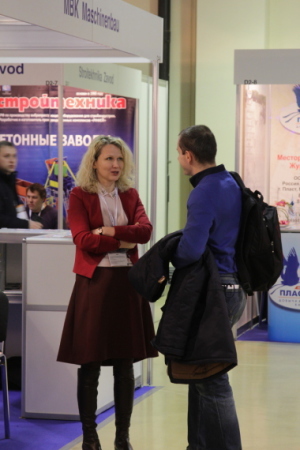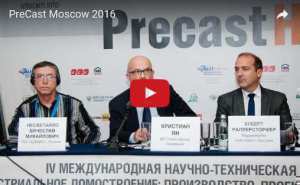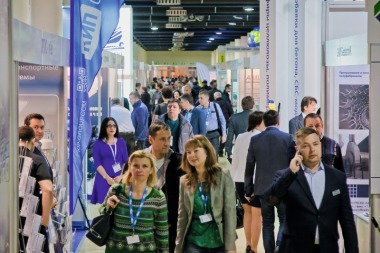ConTech 2015: Closing the gap (video)
The ConTech 2015 trade show and conference reflected the actual state of affairs on the private market sector of concrete and precast concrete manufacturers in Russia over the past year even more realistic than any other well-known industry event in Moscow and St. Petersburg. Several exhibitors share this impression with the BFT editors. Reason: In the tense economic situation, allowing the predominantly medium-sized, private factories in Russia to make investments only to a very limited extent, the buyers were searching for products of the supplier industry in the medium price segment above all. They found such products in large numbers at the about 150 booths of the exhibitors from about 15 countries placed in exhibition hall 7 of the Expozentr exhibition complex, that is directly situated on the Moskva River at the very heart of the Russian capital city of Moscow.
Apart from the exhibitors of the medium price segment, there were, of course, also some suppliers who are usually attributed to the high price segment. Among them was the Top Werk Group with an own booth, the company is producing and selling on a competitive basis not least because of the own production plant in the Russian city of Tula, or Weckenmann, Schlüsselbauer, Hydronix and Ludwig – all of them represented by their exclusive Russian agents. The experience gained from the economic crises of the last few years shows that it is worthwhile to keep a foot in the door and not to leave the huge Russian market hastily.
Even if the tense economic situation weakens the investment activities, it does no harm to the interest of the Russian experts of the industry. All three days of the ConTech exhibition, held from December 01 to 03, saw a large number of visitors, no matter whether at the booths of machinery manufacturers, including Eirich, Nordimpianti, Polarmatic, Meka, Euromecc, MBK, Elkon, Marcantonini, Top Werk, Hawkeye Pedershaab, BHS Sonthofen, WAM or Doubrava; or at the booths of the other suppliers, including Rettenmaier, Omya, Bianchi Casseforme or Testing Bluhm & Feuerherdt.
Italy and Turkey
One major trend of the trade show and the market of equipment suppliers for the Russian precast concrete factories is due to the current political conflict: After the downing of a Russian fighter jet by Turkish planes, the rejection among Russia's population against the country on the Bosporus was growing. Russia's government prohibited imports of various products from Turkey to Russia. So far, Turkish machines for the precast concrete industry are not black listed – the manufacturers of the same were well represented at the ConTech trade show. Some Italian machinery and equipment suppliers, however, quite blatantly hope that this will change due to the political crisis. "As far as the number of plants supplied to the manufacturers of precast concrete elements in Russia is concerned, Turkey is still leading undisputedly," the sales manager of a supplier stated in a conversation with BFT editors. "According to our market research, Turkish machinery manufacturers hold 80 % of the Russian market. Until now, we Western Europeans have to be content with the remaining 20%." When two quarrel, the third usually takes the advantage. Thus, the gap that will possibly be left by the Turkish suppliers is likely to be closed fast – this is at least hoped by the Italian exhibitors at the ConTech trade show.
Made in Russia
The second trend on the Russian market is the fact that the Russians are coming. There were already indications for stronger offers to and stronger demand for products from suppliers of the brand "Made in Russia" at the CTT trade fair in summer 2015; some manufacturers of molds and formwork had been the forerunners. At the ConTech show now also booths of suppliers of mixers, bucket conveyors, silos or egg laying machines for concrete block manufacturing were noticed, among others, those of CGM or Tensotechservis. The latter one is offering, in cooperation with various Western and Eastern European suppliers, complete plant equipment for the production of structural precast elements, including the internally developed control software.
The engineer of a leading Western European machinery and equipment manufacturer commented: "It is true. Russia's manufacturers are copying a lot of Western technology at present." He said that the machines were not as fully developed as their European or US-American models and their market launch might be lacking of some elegance. But this weren't even necessary. Technically demanding technology in turn would require highly qualified staff, which was often not available in the vicinity of the factory. The market in Russia was at a level that was still satisfied by the relatively simple plants offered by the Russian suppliers.
This trend towards "Made in Russia" could even intensify if the Russian government eventually ought to demand that machinery manufacturers should use a greater proportion of components from Russian suppliers. Until now, the government had enforced such provisions, among others, in the automotive industry – there are latest intentions to increase the proportion of components from suppliers to up to 80 % in the field of vehicles, according to the general manager for Russia of the German manufacturer of silo trucks, Feldbinder Spezialfahrzeugwerke based in Winsen.
Text: Christian Jahn, M. A.
CONTACT
Alitinform
Ul. Instrumentalnaya, d. 3, litera B
Biznes-Tsentr „Kantemirovskiy“
2-oy etazh, ofis 218
197022 St. Petersburg/Russian Federation
+7 812 380 65 72

